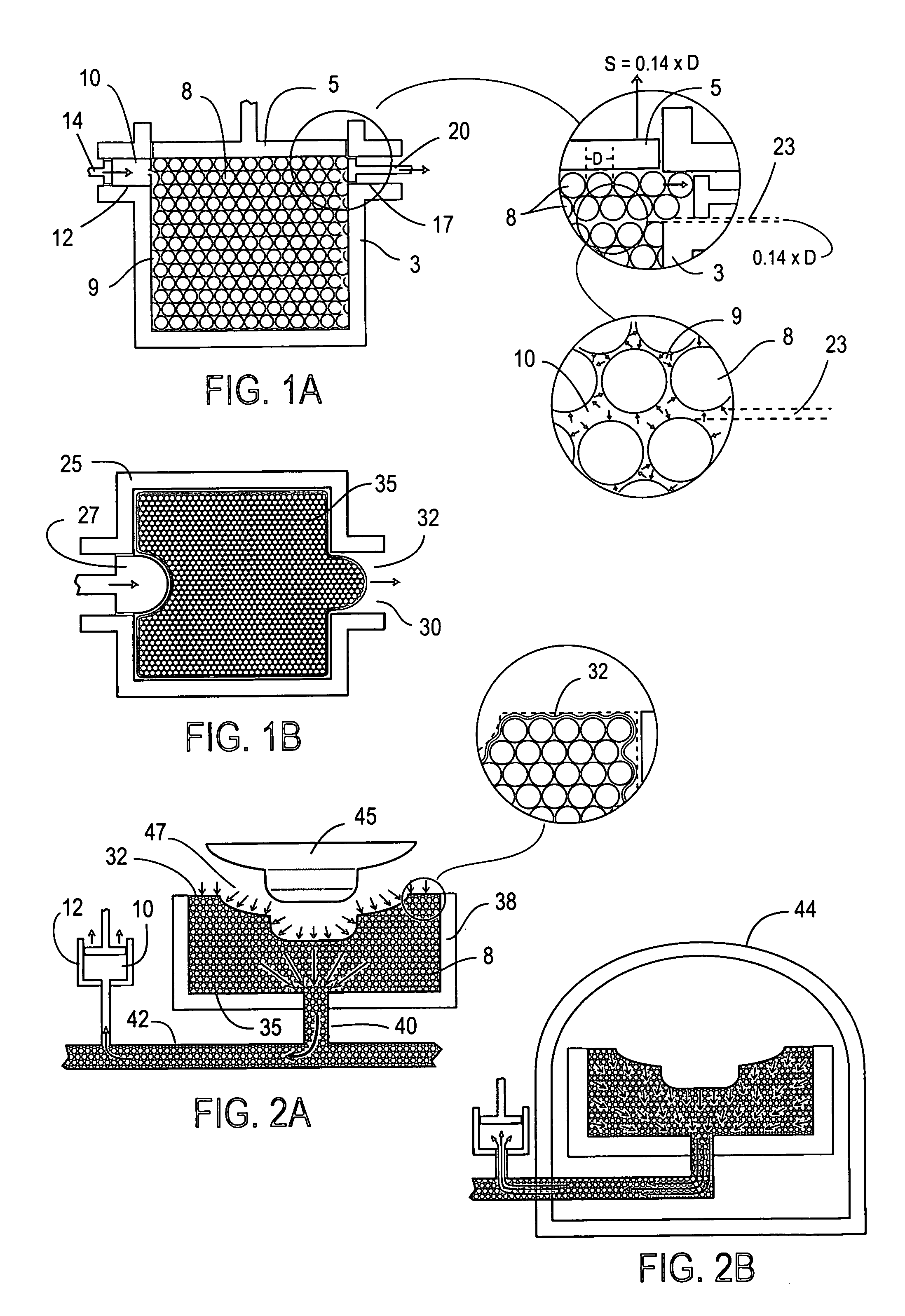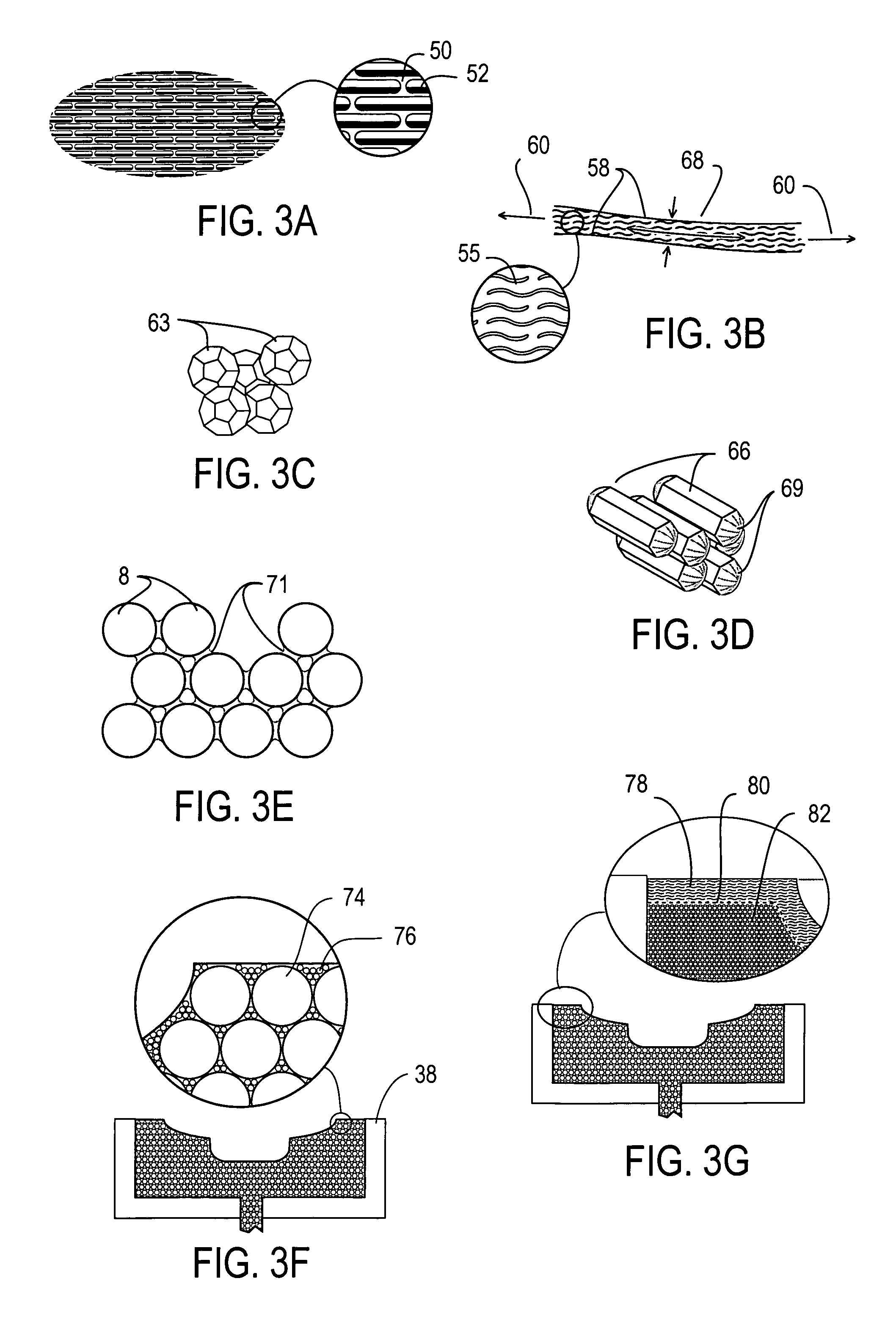Use of state-change materials in reformable shapes, templates or tooling
a technology of state-change materials and templates, applied in the field of reformable materials, can solve the problems of only achieving multiple steps and considerable expense, and achieve the effect of preventing frictional conta
- Summary
- Abstract
- Description
- Claims
- Application Information
AI Technical Summary
Benefits of technology
Problems solved by technology
Method used
Image
Examples
Embodiment Construction
Behavior of State-Change Mixture Comprising Solid Bodies and a Liquid Medium (FIGS. 1A and 1B)
[0078]FIG. 1 through FIG. 3 introduce aspects of the invention including properties of various state-change mixtures, their behavior, and state-change operations.
[0079]FIG. 1A shows a chamber 3 with a piston-type lid 5 that is pressing on ordered, spherical, hard solid bodies 8 that are surrounded by a liquid medium 9 with the same density as the bodies. Chamber 3 has on its left side a tiny chamber 12 closed by a piston 14, which chamber contains an excess amount of liquid medium, hereinafter referred to as transition liquid 10. Chamber 3 also has on its right side a port 17 with a piston 20. Initially lid 5 is pressed against the solid bodies, causing them to be packed and nested against one another inside chamber 3. Therefore, the packed and abutted bodies act as a solid fill in regard to their resistance to compression.
[0080]The first enlargement of FIG. 1A shows lid 5 raised just enoug...
PUM
| Property | Measurement | Unit |
|---|---|---|
| length/width | aaaaa | aaaaa |
| thicknesses | aaaaa | aaaaa |
| diameter | aaaaa | aaaaa |
Abstract
Description
Claims
Application Information
 Login to View More
Login to View More - R&D
- Intellectual Property
- Life Sciences
- Materials
- Tech Scout
- Unparalleled Data Quality
- Higher Quality Content
- 60% Fewer Hallucinations
Browse by: Latest US Patents, China's latest patents, Technical Efficacy Thesaurus, Application Domain, Technology Topic, Popular Technical Reports.
© 2025 PatSnap. All rights reserved.Legal|Privacy policy|Modern Slavery Act Transparency Statement|Sitemap|About US| Contact US: help@patsnap.com



